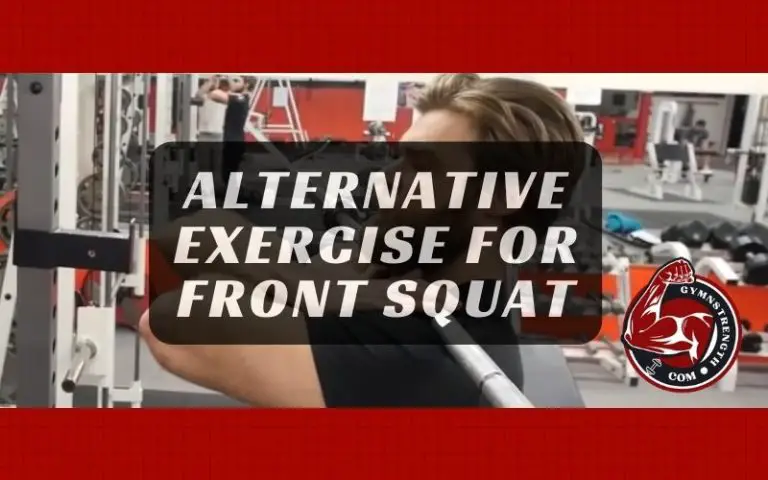Strength Training vs. Cardio for Weight Loss

Both strength training and cardio are effective for weight loss, offering unique benefits. Strength training builds lean muscle, increasing your resting metabolism and allowing you to burn more calories even at rest. Cardio, on the other hand, burns calories efficiently during workouts and improves heart health. A combination of both is ideal, maximizing strength and endurance while preventing boredom. Want to find out how to create a balanced workout plan that suits your goals?
Understanding Strength Training

When you think about weight loss, strength training might not be the first thing that comes to mind, but it plays an essential role in your fitness journey. Incorporating strength training into your routine can considerably enhance muscle growth, which is vital for burning calories even at rest. By building lean muscle, you’re not just reshaping your body; you’re also increasing your metabolic rate.
To guarantee safety, focus on proper workout techniques. Start with lighter weights to master your form before progressing. This helps prevent injuries while maximizing effectiveness. Consider incorporating exercises like squats, lunges, and push-ups, which engage multiple muscle groups. Pistol squats can also be an effective choice for enhancing lower body strength.
Consistency is key; aim for two to three strength training sessions per week. Remember, it’s not just about lifting weights—it’s about creating a balanced fitness regimen that supports your weight loss goals while prioritizing your health and safety.
Benefits of Cardio for Weight Loss
When it comes to losing weight, cardio offers some significant advantages. It efficiently burns calories, which can help you shed those extra pounds faster. Plus, it improves your heart health and boosts your endurance levels, making everyday activities easier and more enjoyable. Additionally, incorporating skipping rope into your cardio routine can enhance your calorie burn and provide a full-body workout.
Burns Calories Efficiently
Although both cardio and strength training have their place in a weight loss regimen, cardio shines when it comes to burning calories efficiently. Engaging in aerobic activities like running or cycling increases your heart rate, which helps create a caloric deficit more quickly than strength training alone. The higher your workout intensity during cardio sessions, the more calories you’ll burn in less time. This efficient calorie burn is vital for those looking to lose weight safely and effectively. Plus, incorporating various cardio exercises can keep your routine enjoyable and sustainable. Just remember to listen to your body, avoid overexertion, and balance your cardio with strength training for best results.
Improves Heart Health
Engaging in regular cardio workouts not only aids in weight loss but also markedly improves your heart health. By enhancing your cardiovascular fitness, you lower the risk of heart disease and improve overall wellbeing. Cardio exercises help strengthen your heart, making it more efficient at pumping blood.
| Benefits of Cardio | Details |
|---|---|
| Reduced Blood Pressure | Helps maintain healthy levels |
| Improved Cholesterol Levels | Increases good cholesterol (HDL) |
| Enhanced Circulation | Boosts blood flow to organs |
Incorporating cardio into your routine can lead to a healthier heart and a more energetic you. So, lace up those sneakers and get moving for both weight loss and a healthier heart!
Boosts Endurance Levels
Cardio workouts not only support heart health but also greatly boost your endurance levels. Engaging in regular endurance training helps you build stamina, making daily activities easier and more enjoyable. You’ll notice that you can sustain physical effort for longer periods, which is essential for weight loss and overall fitness.
- Enhances your ability to perform everyday tasks with ease
- Increases energy levels, helping you stay active throughout the day
- Improves recovery time after intense workouts
- Promotes better oxygen flow, enhancing overall performance
Comparing Caloric Burn: Strength vs. Cardio
When it comes to caloric burn, many people wonder which workout is more effective: strength training or cardio. Both have their merits, but your caloric expenditure can vary based on workout intensity and duration. Cardio exercises like running or cycling generally burn more calories during the workout itself, especially when done at a high intensity. However, strength training also plays a vital role in elevating your metabolism post-workout through the afterburn effect. Additionally, incorporating activities like skipping rope can enhance cardiovascular fitness while providing a fun alternative to traditional cardio workouts.
If you’re focusing on safety, it’s essential to choose the intensity level that suits your fitness level. Overdoing it can lead to injury. Strength training not only helps improve muscle tone but can also lead to greater caloric burn over time as you build muscle. Ultimately, the best approach may be a balance of both, allowing you to enjoy the benefits of each while keeping your workouts safe and effective.
The Role of Muscle Mass in Metabolism

Your muscle mass plays an essential role in how efficiently your body burns calories, even when you’re at rest. The more muscle you have, the higher your resting metabolic rate, which means you’ll burn more calories throughout the day. Understanding this connection can help you make informed choices about your workout routine for weight loss. Incorporating jump rope exercises into your routine can enhance muscle tone and support your weight loss goals.
Muscle Mass Increases Metabolism
Muscle mass plays an essential role in boosting metabolism, acting as a metabolic powerhouse in the body. When you engage in strength training, you’re encouraging muscle hypertrophy, which leads to a metabolism boost. This means you’ll burn more calories at rest, helping with weight management.
- Increased muscle mass contributes to higher energy expenditure.
- The more muscle you have, the more calories you burn daily.
- Strength training can help preserve muscle during weight loss.
- Maintaining muscle mass supports overall health and wellness.
Resting Metabolic Rate Factors
Although various factors influence resting metabolic rate (RMR), muscle mass stands out as a crucial element. When you have more muscle, your body requires more energy for maintenance, increasing your resting energy expenditure. This means you’ll burn more calories even at rest, which is fundamental for effective weight loss. However, it’s important to remember that metabolic adaptation can occur when you lose weight, potentially slowing your metabolism. To counteract this, incorporating strength training can help you build and maintain muscle mass, keeping your RMR higher. Balancing your workouts with proper nutrition guarantees your body has the necessary fuel for muscle repair and growth, ultimately aiding in long-term weight management. Prioritize safety and gradual progress to achieve sustainable results.
Time Efficiency: Which Workout Saves More Time?
When it comes to maximizing your workout time, which option reigns supreme: strength training or cardio? Both have their merits, but if you’re focused on time management and efficiency, strength training often wins out. While cardio burns calories during your workout, strength training boosts your metabolism for hours afterward, making it a smart choice for those with limited time.
Consider these points:
- Shorter workout duration: You can achieve effective results in 30 minutes or less.
- Increased calorie burn: Post-workout effects can last up to 48 hours.
- Muscle preservation: Helps maintain lean muscle, essential for weight loss.
- Variety of exercises: Allows for quick shifts between movements, keeping the heart rate up.
Ultimately, if you’re looking for a time-efficient strategy that maximizes your weight loss efforts, incorporating strength training into your routine may be the best option for you.
The Impact on Mental Health and Well-being

Engaging in regular exercise, whether through strength training or cardio, can greatly enhance your mental health and overall well-being. Both forms of exercise contribute to improved mental resilience, helping you cope better with life’s challenges. When you work out, your body releases endorphins, which can elevate your mood and create a sense of emotional stability.
You might find that strength training boosts your confidence as you achieve your fitness goals, while cardio can act as a stress reliever, allowing you to clear your mind. Incorporating either type of exercise into your routine can lead to reduced anxiety and depression symptoms, promoting a healthier mindset.
Ultimately, the key is to choose activities that feel safe and enjoyable for you. By doing so, you’ll not only work towards your weight loss goals but also cultivate a positive mental state that can improve your overall quality of life.
Combining Strength Training and Cardio
To maximize your weight loss efforts and overall fitness, combining strength training and cardio can be a game changer. By integrating both forms of exercise, you can harness the strength benefits of building lean muscle while enjoying the cardio advantages of increased endurance and calorie burn. This balanced approach not only helps you lose weight but also improves your overall health.
- Increased metabolism: Muscle burns more calories at rest.
- Improved heart health: Cardio strengthens your cardiovascular system.
- Enhanced recovery: Strength training can prevent injuries by supporting joint stability.
- Variety and enjoyment: Mixing workouts keeps you motivated and engaged.
- Muscle development: Jumping rope can also contribute to building muscle mass while enhancing cardiovascular fitness.
Creating a Balanced Workout Plan for Weight Loss
Creating a balanced workout plan for weight loss is essential if you want to achieve sustainable results. To guarantee safety and effectiveness, focus on workout frequency and exercise variety. Aim for at least 150 minutes of moderate-intensity cardio each week, combined with strength training two to three times weekly. Here’s a simple plan to visualize your approach:
| Day | Cardio Activity | Strength Training |
|---|---|---|
| Monday | 30 min brisk walking | Upper body workout |
| Tuesday | 30 min cycling | Rest |
| Wednesday | 30 min jogging | Lower body workout |
| Thursday | 30 min swimming | Core workout |
| Friday | 30 min dancing | Full body workout |
Incorporating various exercises not only keeps things interesting but also helps prevent injuries. Monitoring workout types and listen to your body, and adjust your plan as needed for a safe and effective weight loss journey.
Frequently Asked Questions
Can I Lose Weight Without Doing Any Cardio?
Losing weight without doing any cardio can be like trying to bake a cake without an oven—it’s possible, but it takes some creativity. You can focus on dietary adjustments and strength training to boost your metabolic rates. By eating balanced meals and incorporating resistance exercises, you can effectively shed pounds. Just remember, it’s important to prioritize safety and consult a professional if you’re unsure about what approach suits you best.
How Often Should I Strength Train for Weight Loss?
For effective weight loss, you should aim to strength train at least two to three times a week. This frequency helps build muscle while promoting fat loss. Consider incorporating workout variations, like compound movements and isolation exercises, to keep your routine engaging and effective. Always listen to your body and allow for rest days to avoid injury. With consistency and proper form, you’ll see progress while ensuring your safety.
Is It Safe to Do Both Cardio and Strength Training Daily?
Imagine trying to juggle while running—it’s tricky, right? Doing both cardio and strength training daily can be done, but you’ve got to prioritize exercise recovery importance. Daily workout benefits include improved endurance and strength, but listen to your body. Overdoing it can lead to fatigue or injury. Balancing your routine with rest days guarantees you’re safe and allows your muscles to recover, keeping your progress on track and avoiding burnout.
What Should I Eat Before Strength Training or Cardio?
Before your workout, it’s essential to choose the right pre-workout snacks to fuel your performance safely. Aim to eat a balanced snack about 30 to 60 minutes beforehand, focusing on carbohydrates and protein. Options like a banana with peanut butter or Greek yogurt with berries work well. Meal timing matters, too—eating too close to your workout can lead to discomfort, so plan accordingly for the best results and a safer workout experience.
Will Strength Training Make Me Bulk Up?
You might worry that strength training will make you bulk up, but that’s not necessarily the case. If you’re focused on weight loss, you can build lean muscle without gaining excess bulk. Your body’s response depends on factors like your diet, training intensity, and genetics. Incorporating strength training can help you increase muscle gain while boosting your metabolism, leading to effective weight loss. Just remember to balance it with proper nutrition and recovery.





